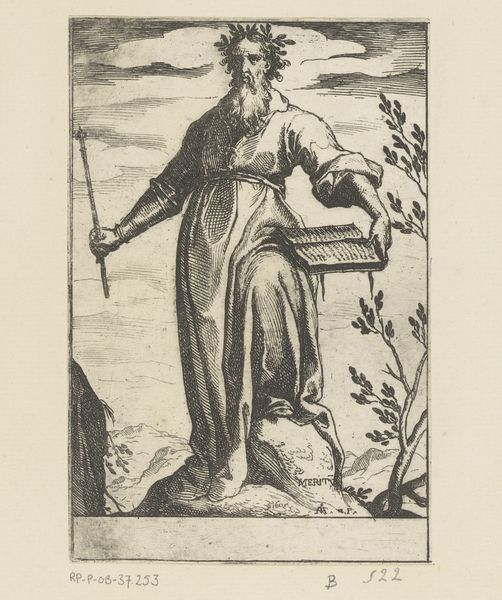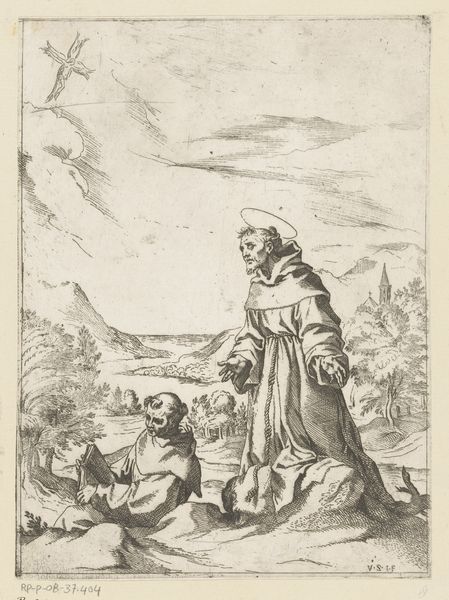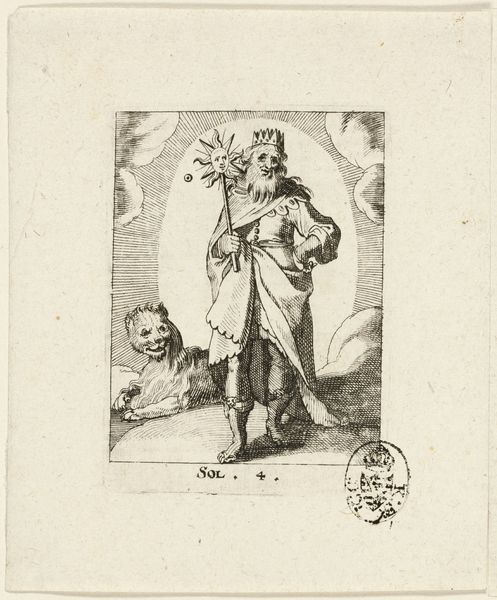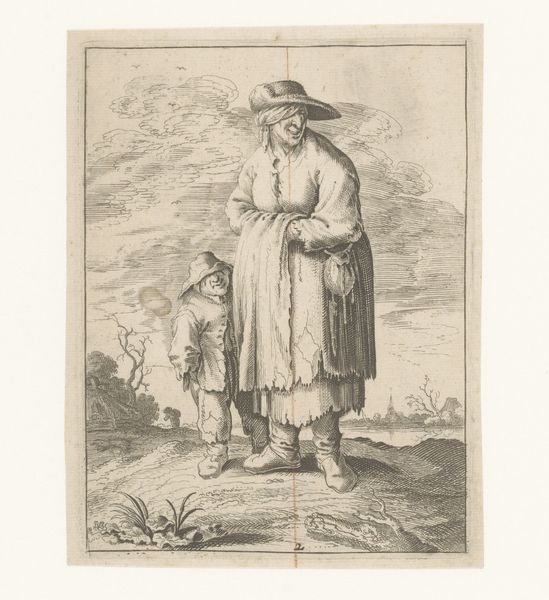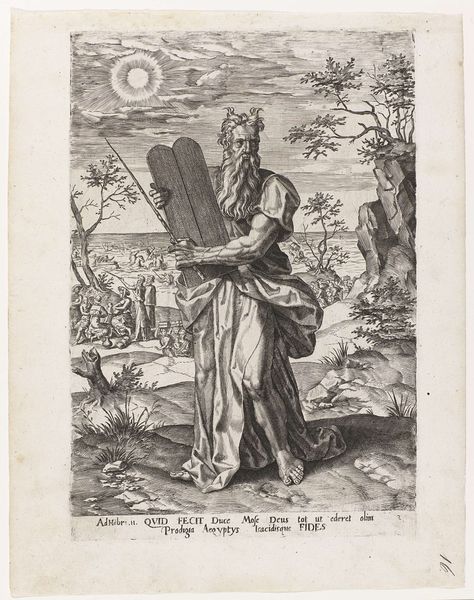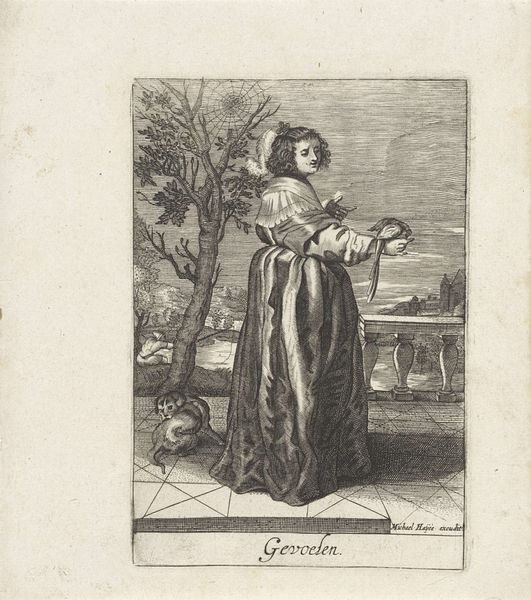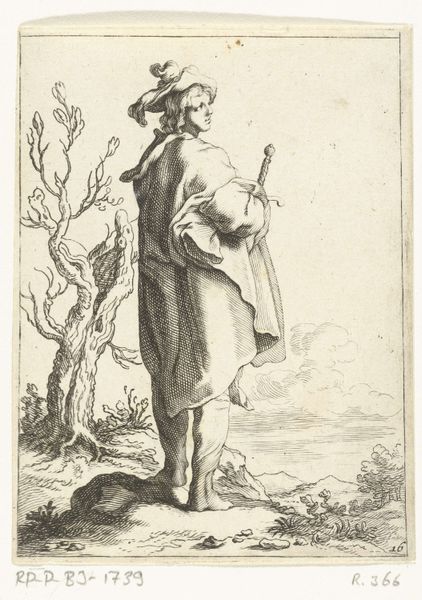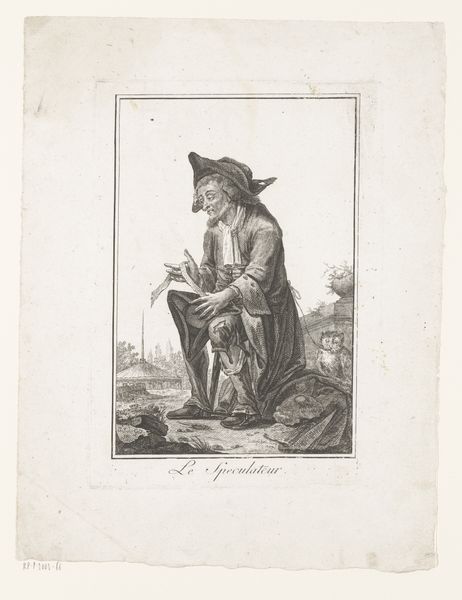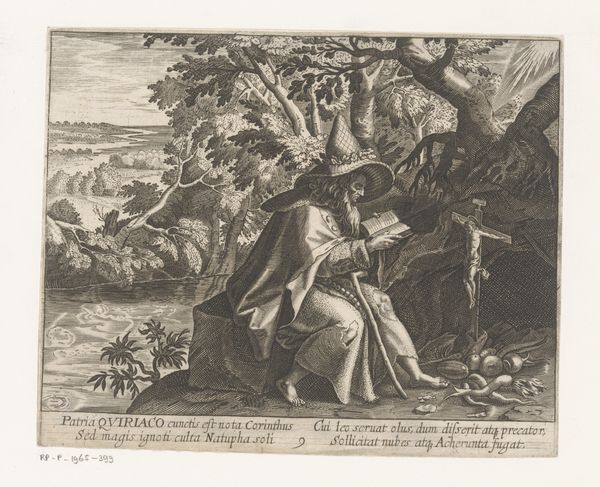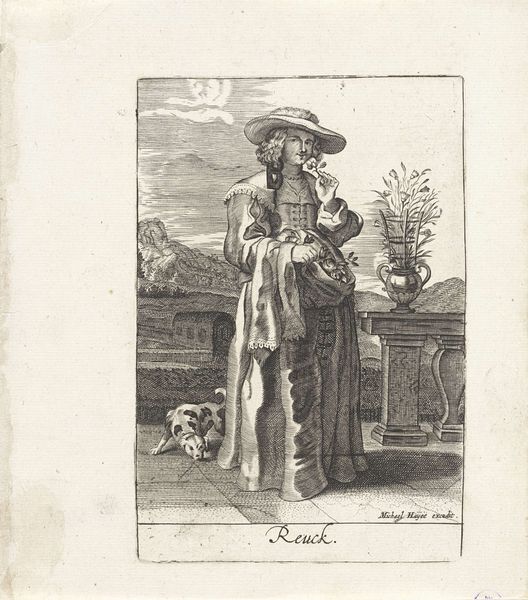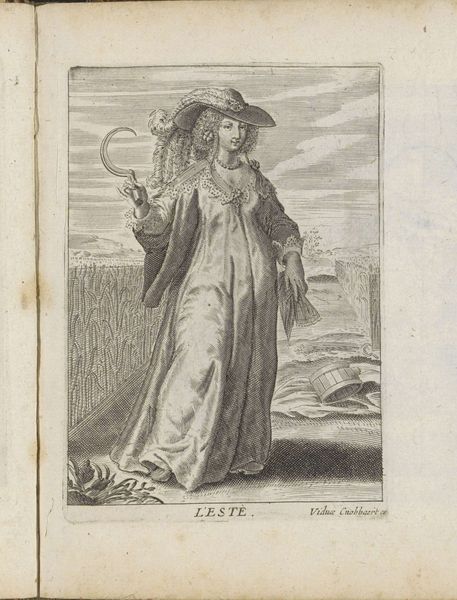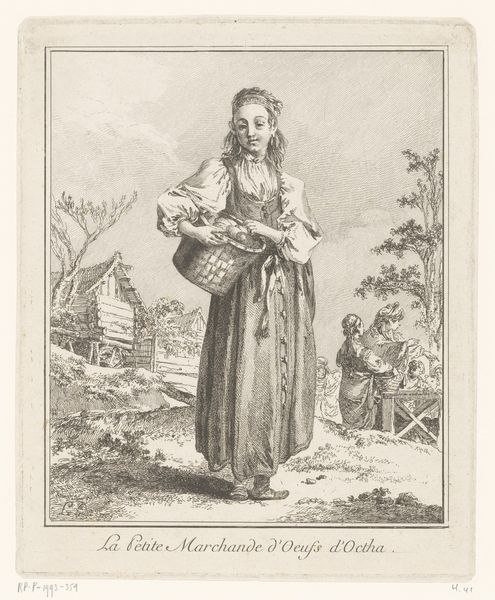
print, engraving
#
pencil drawn
#
aged paper
#
light pencil work
#
baroque
# print
#
pencil sketch
#
sketch book
#
landscape
#
figuration
#
personal sketchbook
#
sketchwork
#
sketchbook drawing
#
pencil work
#
genre-painting
#
sketchbook art
#
engraving
Dimensions: height 141 mm, width 96 mm
Copyright: Rijks Museum: Open Domain
Editor: Here we have "Gehoor", a print, engraving I think, from somewhere between 1600 and 1676. It looks like a woman playing a lute in a landscape, and an angel and deer standing nearby. It has such a calm and pastoral mood. What do you see in this piece? Curator: Immediately, I’m struck by how this seemingly simple image participates in a complex web of social and political ideas about gender, class, and the senses in the early modern period. "Gehoor", meaning "hearing", positions musical performance as not just aesthetic pleasure, but a gendered and classed activity. Editor: Gendered how? Curator: Well, consider who is depicted as making the music – a woman, seemingly of a higher class based on her clothing. In this era, musical skill was a marker of feminine accomplishment for aristocratic women. It signals both refinement and leisure. But we also have to ask who gets to represent that experience, right? Whose stories are visually told, and for whom? Editor: So the print might be less about pure appreciation of music and more about social performance and status? Curator: Precisely. The presence of the cupid reinforces this association of hearing and music with notions of love and perhaps even sexual desire. It’s fascinating how the image ties into contemporary discourses of female virtue and the senses. And don't forget about the deer – often symbols of the hunt and associated with aristocratic power. It adds another layer of complexity. Editor: It’s amazing how much is packed into such a small scene! It makes me think about the power dynamics inherent in even seemingly simple images. Curator: Right. It's a potent reminder that art is always in dialogue with its historical context. Looking at a seemingly quiet domestic scene such as this allows us to consider not just personal artistry, but structural power, and cultural norms about who has a voice, literally and figuratively.
Comments
No comments
Be the first to comment and join the conversation on the ultimate creative platform.
